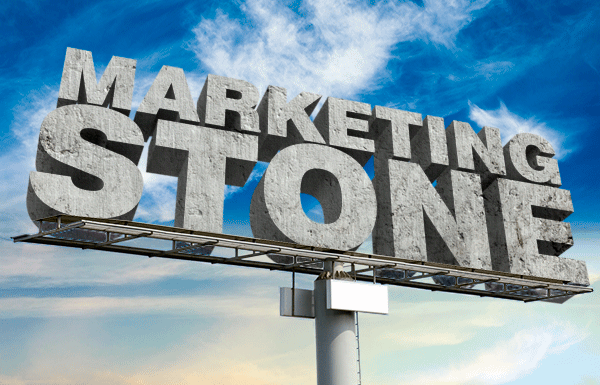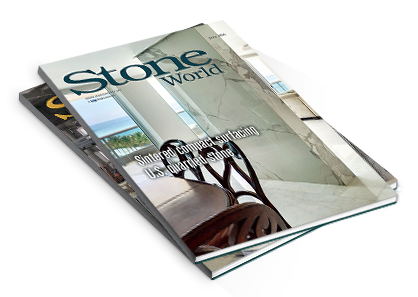Marketing
Getting your product in front of people, whether it is consulting or stone or tools and machinery in the stone market, requires time and money.
Typically allow at least 5 to 10% of your business income to go towards marketing and another 5 to 7% for sales. Most companies don’t budget anything or not enough and when times are hard the first thing they cut are sales and marketing, just the opposite of what they should do.
Marketing is not selling but it assists sales. Marketing requires a lot of stone research to study the field, the market area, the type and depth of the customers to be reached, how to reach them, how to make an impact, whether it is national or international, budgeting for the expense, paying for brochures, travel, samples and many other issues. People will not always agree on how to neither market nor appreciate the monies that need to be set aside to reach the market.
 Getting your product in front of people whether it is consulting or stone or tools and machinery in the stone market requires time and money. Typically to make an impact might take three to five years of constant pushing and being in front of the clients and then always being present so as to keep your products interesting to them. There are many ways to do this and for years people have used the most expensive which is door to door travel tied in with sales calls. Some have opted not to have employees salaried to do this but rather use independent agents paying them a fee to do so. This approach can be done by person to person, or through Trade Shows such as the Stonexpo, Surfaces, Coverings and if international in scope each country will have a show for stone and related products or more then like Italy which has Carrara and then Verona.
Getting your product in front of people whether it is consulting or stone or tools and machinery in the stone market requires time and money. Typically to make an impact might take three to five years of constant pushing and being in front of the clients and then always being present so as to keep your products interesting to them. There are many ways to do this and for years people have used the most expensive which is door to door travel tied in with sales calls. Some have opted not to have employees salaried to do this but rather use independent agents paying them a fee to do so. This approach can be done by person to person, or through Trade Shows such as the Stonexpo, Surfaces, Coverings and if international in scope each country will have a show for stone and related products or more then like Italy which has Carrara and then Verona.
Mailers’ sending out brochures and literature and flyers is good or nowadays people turn to emails. Other electronic avenues gaining strength are Twitter, Facebook, Websites of your own and others. Phone calling is a good way to talk with the person and show direct interest but can be problematic to get to the right person at the right time. Further if you are a national company or international you have time zones to content with. I personally find myself in my office calling Europe at 5 am and then at 9 pm at night talking with clients in California.
Sampling is a big cost but most important to marketing and sales costs and must be a major investment in sample costs, packaging, shipping, and persons to put this together and get it out. Spending $5000 a month or more is not unusual and then every time you have a new stone you have to send out samples or how do you expect your customers to appreciate it. Photos on the web or by email are nice but are not accurate and truly reflective of the actual sample, but can show the character of the stone.
Finding your customers is also very much time consuming and can be costly for you might have to pay a research company large amounts of money to get a mailing list and then to get the buyers name and then to get the email address etc. Many companies base their marketing effectiveness on volume and the number of companies and people contacted weekly or monthly and how many or what percentage might eventually buy something which in today market you are lucky to get a 3 to 5% return. So the more you get in number of customers the more chances of reaching them and getting them to work with your sales people and buy.
The biggest issue for companies is how they portray themselves to the customers and they may have diverse customers ranging from architects/designers to contractors, retailers, fabricators, distributors, general contractors or even home owners for example. Each require sometimes a unique way of approach. Many showrooms miss the opportunity to market to their clients and don’t put literature and DVD’s out for their customers to see and take. For example, perhaps you not only sell stone but you install, or you want to show maintenance issues and could put out a brochure on “how to keep your stone looking good” and if you have problems, call and will send out a technician. Most companies can do this but don’t. Having a captive buyer in your shop or showroom requires you have lots of literature, publications, reading material, posters, advertising and other things to show them who you are and what you can do.
 Magazines and paid publications is another way to get your name and company out there and there are several good stone magazines in the business like Stone World for example. There are others. Some companies have joined strengths in a city and united to generically put their money together to make a TV ad campaign to push buying granite or marble for kitchen tops versus other hard surfaces. The more you get the product out there and increase the percentage of buyers who were thinking of ceramic or other products like Silestone and switch them to real stone, the more everyone benefits even if your own company is not mentioned.
Magazines and paid publications is another way to get your name and company out there and there are several good stone magazines in the business like Stone World for example. There are others. Some companies have joined strengths in a city and united to generically put their money together to make a TV ad campaign to push buying granite or marble for kitchen tops versus other hard surfaces. The more you get the product out there and increase the percentage of buyers who were thinking of ceramic or other products like Silestone and switch them to real stone, the more everyone benefits even if your own company is not mentioned.
